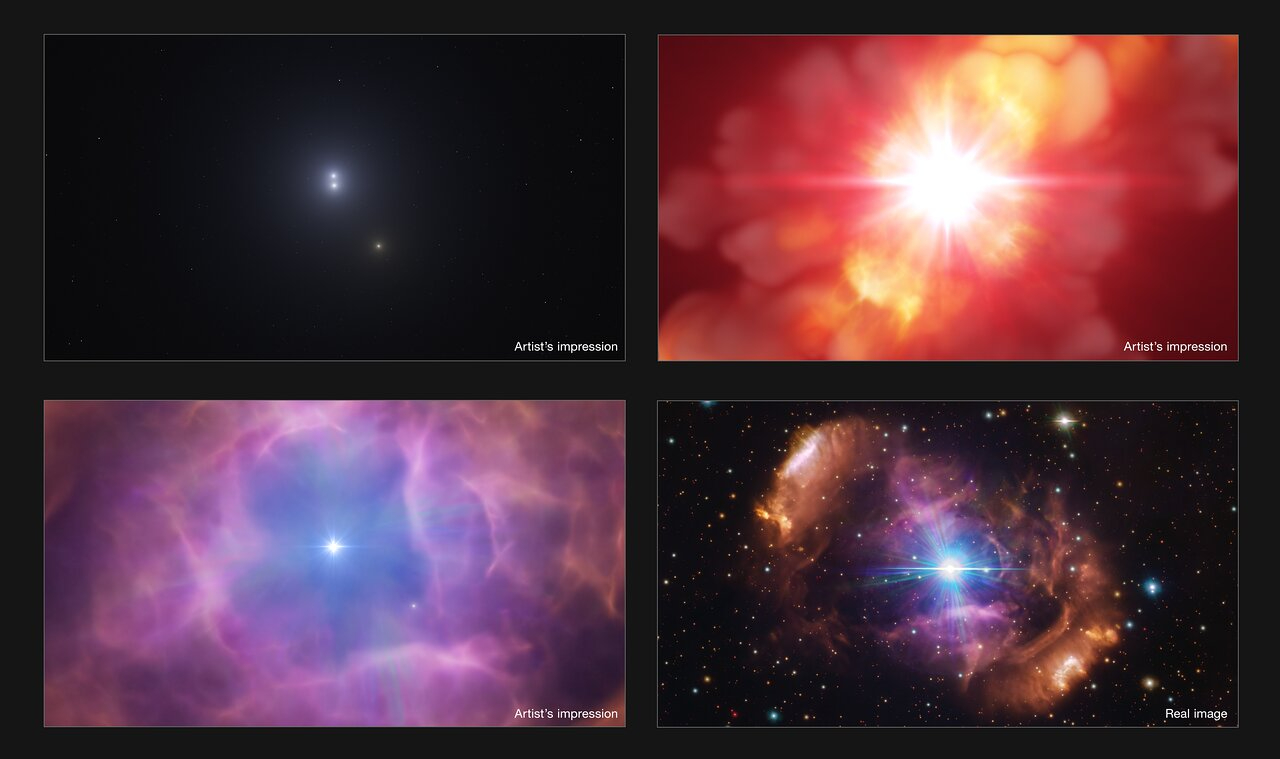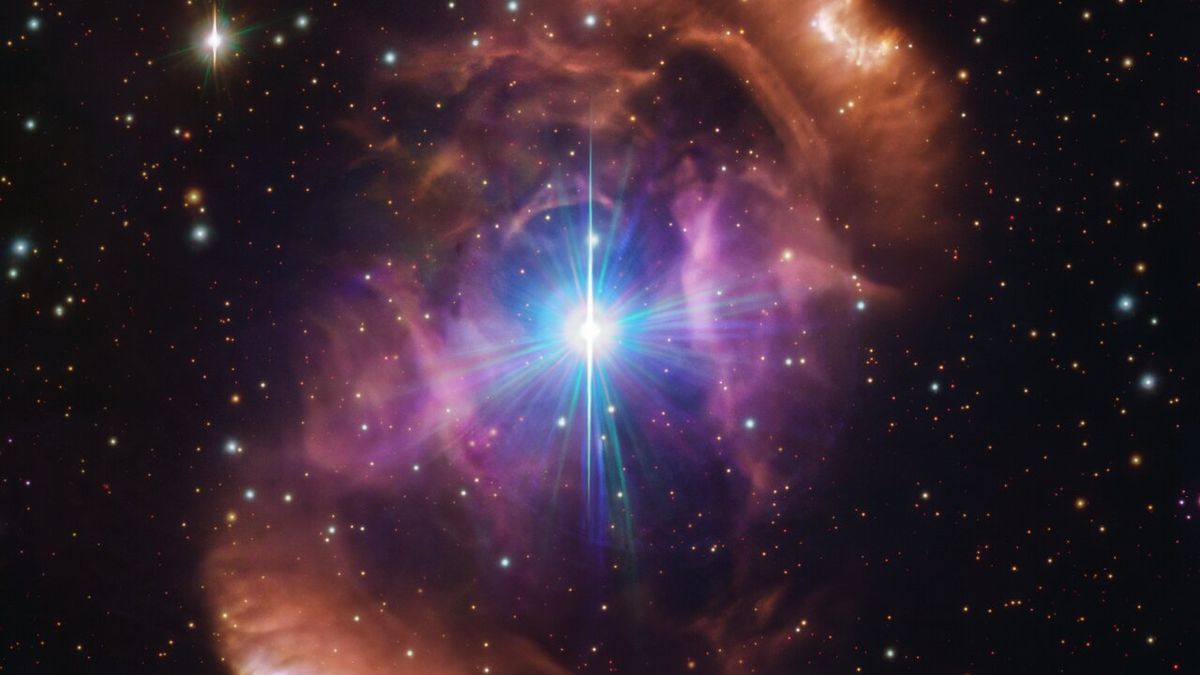Massive stars gain their magnetism by colliding and merging with other stars, according to evidence from a bizarre binary system surrounded by a dusty, element-rich nebula.
Inside that bipolar nebula, which has the dual designation of NGC 6164/6165, is the star system HD 148937. Located some 3,800 light-years away, in the southern hemisphere constellation of Norma, HD 148937 contains two massive stars in orbit around one another. One of these stars is magnetic and, in fact, is the brightest and hottest massive star known to have a magnetic field. That’s puzzling because, based on what we know about the interiors of stars, massive stars should not have magnetic fields.
We’re used to thinking of the sun as a magnetic star, which drives phenomena such as sunspots, flares, prominences and the solar wind. The magnetic dynamo is generated inside the sun, at the boundary between the inner radiative layer and the outer convection layer. In the radiative layer, energy is transported from the star’s core via gamma-ray photons; at the convective layer, this energy is converted into current of hot plasma that rises up to the sun’s visible surface, where the energy is released as light and heat.
Related: Gravitational waves reveal 1st-of-its-kind merger between neutron star and mystery object

The less massive a star is, the greater proportion of its volume the convective layer takes up. The smallest red dwarfs are nearly entirely convective, and are very magnetically active as a result. The more massive a star, however, the smaller the convective layer is. This means the most massive stars are entirely radiative, and without a convective layer, they cannot generate a magnetic field.
Yet, somehow, about 7% of the most massive stars have been observed to possess a magnetic field. The question that has perplexed astronomers is: How?
The answer to this secret may lie within HD 148937.
“When doing background reading, I was struck by how special this system seemed,” said the European Southern Observatory’s Abigail Frost in a press statement.
Frost and Hugues Sana of KU Leuven in Belgium led efforts to study HD 148937 more closely, using nine years’ worth of observations from the ESO’s Very Large Telescope Interferometer, which combines the powers of four eight-meter telescopes in Chile.
“After a detailed analysis, we could determine that the more massive star appears much younger than its companion, which doesn’t make any sense since they should have formed at the same time,” said Frost.

The more massive of the two stars, with between 50 and 60 times the mass of the sun, is the magnetic one. Based on its temperature, it appears 1.5 million years younger than its companion. This is a significant age difference for massive stars, which typically only live for a few million years before going supernova.
There’s also the nebula to consider; its bipolar shape is indicative of its origin in some kind of outburst from one of the stars of HD 148937 within just the past 7,500 years. The nebula contains high concentrations of carbon, nitrogen and oxygen, which are elements typically found inside stars, but not outside them.
Frost and Sana’s observations were able to piece together this particular stellar jigsaw. One star in a binary system being younger than its companion is a sure sign that a merger of two stars has taken place in the past few thousand years.
“We think this system had at least three stars originally,” said Sana. “Two of them had to be close together at one point in their orbit while another star was much more distant.”
We can picture HD 148937 as it once was: a close binary on a short orbit, and circumbinary around them was a third star. The two close stars spiraled together, coalescing into one. They ejected excess material along their new rotational axis, forming the nebula. Meanwhile, inside the newly merged star things were, and still are, in a state of flux. The stellar material from the two stars is churned up, giving the merged star a more youthful and rejuvenated complexion, while inside creating a turbulent and convective environment that is able to generate the dynamo that gives the star its magnetic field strength of a kilogauss (for comparison, the sun’s magnetic field has an average strength of 1 gauss).
“The two inner stars merged in a violent manner, creating a magnetic star and throwing out some material, which created the nebula,” said Sana. “The more distant star formed a new orbit with the newly merged, now-magnetic star, creating the binary that we see today at the center of the nebula.”
The magnetic field will not last; the star’s interior will eventually become fully mixed and settle down to become completely radiative. From there, the magnetic dynamo will switch off. Not only is this further evidence that the merger must have occurred relatively recently, but it also puts the figure of 7% of massive stars having magnetic fields into context, hinting at the rate of mergers in close binaries.
The findings are reported in a paper published on April 12 in the journal Science.

